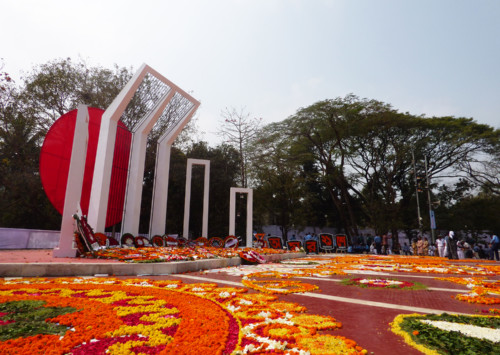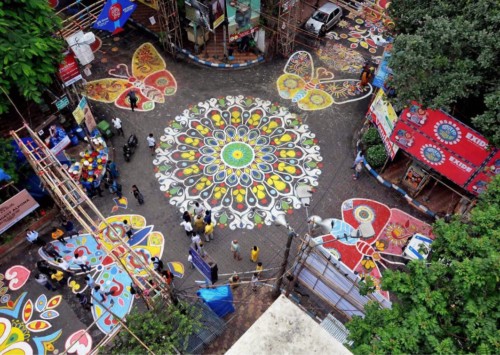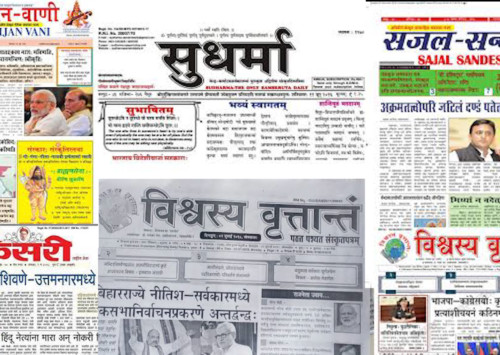Curious case of linguicide
It is said that one cannot stand in the same river twice, as the water keeps on flowing, this is true for languages as well. Language changes every day.
For a country that prides itself on its cultural, ethnic, spiritual and linguistic diversity, India is fast losing at least some elements of this diversity. The loss in linguistic diversity has been startling over the past few decades. Already, the 1961 census had identified 1600 mother tongues. However, the next census, barely 10 years later in 1971, only 108 languages were listed as mother tongues. According to the 2011 census, there are 42 Indian languages that are on the verge of becoming extinct and many that are endangered.
In fact, every two weeks a language dies and with it, a wealth of knowledge is lost in the sea of time. Some estimates suggest that as many as 220 languages have died in the last 50 years. And today, India has 42 languages that are spoken by less than 10,000 people, the benchmark for identifying endangered languages. These languages are considered critically endangered by UNESCO and may be headed towards extinction.
The vanishing voices
Sarnami
A simple yet powerful language that holds the priceless treasure of Indian history, culture and most importantly mixed identities, Sarnami is a mixture of Indian language that is spoken by immigrants and it has also adopted words from Dutch and Sranan Tongo, but the grammar and lexicon of Sarnami reflect the influence of its mother tongue. In order to escape poverty at home, between 1873 and 1916, when the indentured system was abolished, close to 34,000 Indians – both Hindus and Muslims – made the journey to Suriname, almost all of them from modern-day Bihar, Jharkhand and Uttar Pradesh. They were required to serve their contract at their allotted plantation at the end of which they had the option of renewing their contract and continuing to work on the plantations, staying back as free men or returning to India. More than two-thirds of the arrivals stayed back in Suriname.
The lone survivor of the Caribbean Hindustani, this language is important in both cultural resource as well as an abiding artefact of the historical period. Indians who stayed back in Surnami in 1916 spoke Bhojpuri, Awadhi, Maithili and Magahi and in their new home, these tongues from various region spread across the Gangetic plains communicated with each other. Inevitably, the tongues which in any case were intelligible tended to mix, a process known as koineisation. It was in this linguistic situation that Sarnami was developed. In recent years the population that communicates in Sarnami is dying out, now with approximately 125,000 persons speaking Sarnami, like many other languages, this too is on the verge of being extinct.
Bo
For a language to exist, it’s said that a minimum of two people is required, but in 2010 this myth was broken by the woman who was the last known human to speak the 65,000-year-old Bo language of the Andamans. The last speaker of this ancient yet niche language died a decade ago in the island breaking the millennia-old link to one of the world’s oldest cultures. Boa Sr, who lived through 2004 tsunami, Japanese occupation and diseases brought by British settlers was native to the island and spoke fluent Bo. Taking its name from now extinct tribe, Bo is one of the 10 Andamanese languages, which are thought to date back to pre-Neolithic period human settlement in south-east Asia. It is believed by a linguist that the language is so rich it has words to predict a tsunami, thus when the tsunami arrived, no native from Andaman died. Though language is closely studied by researchers or linguists, Boa Sr spent the last few years of her life unable to converse with anyone in her mother tongue.
One of the main reasons behind languages becoming extinct is the lack of adequate documentation or written material which could help in the propagation of the languages, especially in the modern world. In the days gone by, due to very compact social structures where members of an ethnic community or speakers of a language stayed close together and spent their entire lives in the area. This ensured the transmission of the language, principally orally, from one generation to the next and not only kept the heritage intact but each successive generation, on the whole, managed to add to the wealth of culture and knowledge stored in the language. However, in the modern world, this method of transmission of languages is not workable as the social groups are no longer closely knit and an increasing number of ethnic groups have begun to diffuse as members leave their villages in search of jobs or education.
In this situation, it is the written word that is the best guarantee for the preservation of the language and cultural heritage. Hence, today, the success of a language to survive depends on the art of documentation. The trend had begun over 200 years ago during the British colonial period when the British, as a matter of expediency and bureaucratic ease, decided that only those languages of India would be counted in the list of languages that had some printed material available. However, few of the niche Indian languages had any written heritage. Even a primary language like Marathi, spoken by over 83 million persons today, had its first printed book published only as late as in 1775. Thus, most of the smaller languages, essentially spoken by tribals or inhabitants of remote parts of the country were put on the path of disappearance.
Future of today’s widely spoken languages
Researchers believe, invariably, when languages grow enormously, they start diminishing or dying. There is a principle within the realms of linguistic studies that a language has an optimum carrying capacity and when a language starts carrying semantic load beyond its capacity, it starts cracking up. A primary example of this is Latin in Europe. From the 7th century onwards, while other European languages, daughters of Latin, began growing, Latin began to diminish and today, outside of the academic world and the Church, there is hardly any Latin left in the world. Experts say that what happened to Latin is true of practically all other large languages, including our own Sanskrit. The experts say that because language is a means of communications and it stays vibrant and grows as long as humans in those groups have a sense of community, or else they break up in smaller section and becomes a new dialect.
In an effort to preserve the rich heritage hidden in the multitude of Indian languages, People’s Linguistic Survey of India and Centre Institute for Indian Language (CIIL), Mysore have been working to preserve the endangered language of India. People’s Linguistic Survey of India discovered that the highest density of the concealed languages was in central India. While Indo-Aryan languages are spoken in the northern part of the country and the Dravidian languages are prevalent in southern India, but there is a belt in between, in central India, which displays a wealth of languages and dialects and is the primary reason why the languages up north and the languages down south and up north could not merge even after knowing of each other’s existence for over 3,000 years. This zone, stretching all the way from Surat in the west to Howrah in the east, is essentially populated by tribal communities, often living in densely-forested areas that have remained cut off from the mainstream even 75 years after the independence.
The Indian government is also taking steps to preserve the sea of languages and dialects that the country holds. The Centre has initiated a scheme for protection, preservation, and documentation of all mother tongues and languages of India which are spoken by less than 10,000 people. The government has taken initiatives like a scheme for Protection and Preservation of Indian languages (SPEEL) which is being implemented by CIIL, Mysore. The University Grant Commission (UGC) has a scheme for the establishment of centres for endangered languages under which centres were approved in respect of nine central universities. The UGC has also invited proposals from universities for establishment of Department of Devanagari Lipi script in universities with a view to preserving dialects which do not have a written script in Devanagari. For example, Bhil has showcased an 85 pc growth in speakers in the last 20 years. Though slow, the country is seeing progress and is doing what it can to preserve the simple yet powerful languages that make India in the true sense of the word – a diverse nation.













